Does A Vegetable Garden Attract Mice
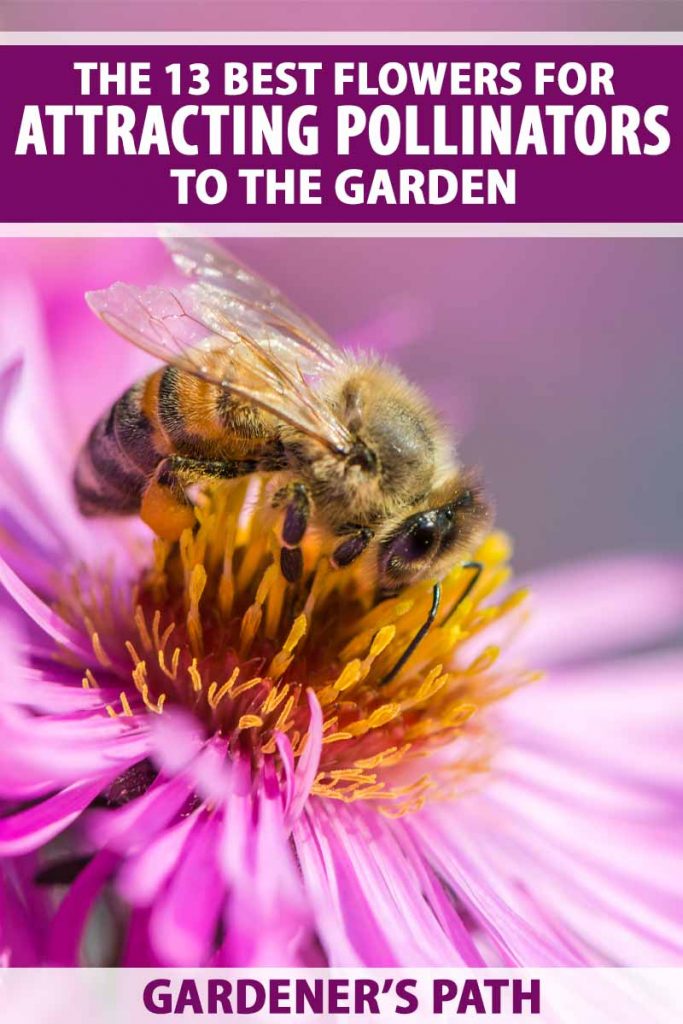
Flowers are beautiful, bringing a splash of color to our gardens and veggie patches. But there's so much more to them than just beauty alone.
Flowers play a key role in our ecosystem, they can be edible, and they are perfect for attracting beneficial insects and other small helpful animals. This is especially true in the case of pollinators.
The functioning of our ecosystem rests on the tiny backs of these pollinators – a big burden for their little shoulders to bear! In fact, we rely on pollinators to help produce as much as one-third of our food.
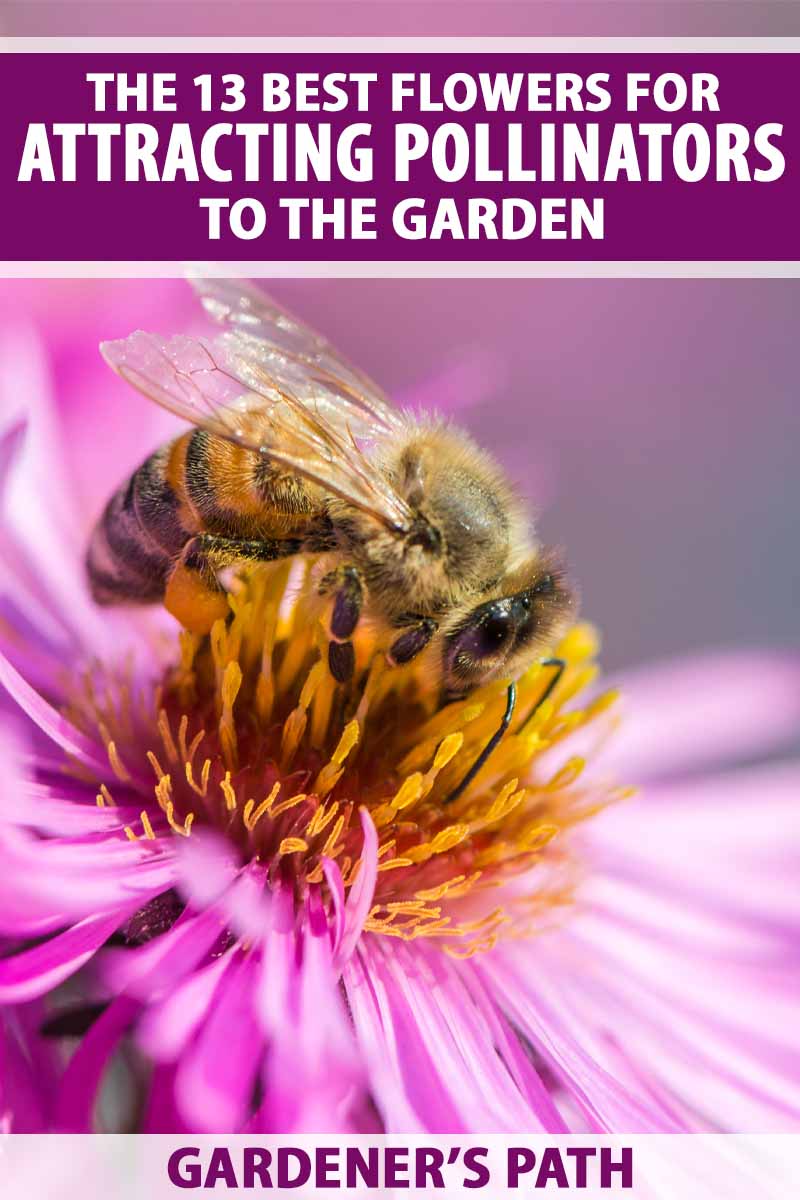
We link to vendors to help you find relevant products. If you buy from one of our links, we may earn a commission .
So, if there's anything we can do to give them a helping hand, we definitely should!
Read on to find out more about the beautiful array of blooms you can plant in your garden to help your pollinators, and your plants. The following are 13 of our top picks.
Our Top Selections
- Borage
- Butterfly Bush
- Coneflower
- Cow Parsnip
- Dahlia
- Daisy
- Dandelion
- Goldenrod
- Lavender
- Marigold
- Milkweed
- Snapdragon
- Sunflower
1. Borage
Also known as a starflower thanks to its attractive star-shaped blue flowers that are beloved by both people and pollinating insects alike, borage provides ample sweet nectar, which is perfect for bees.
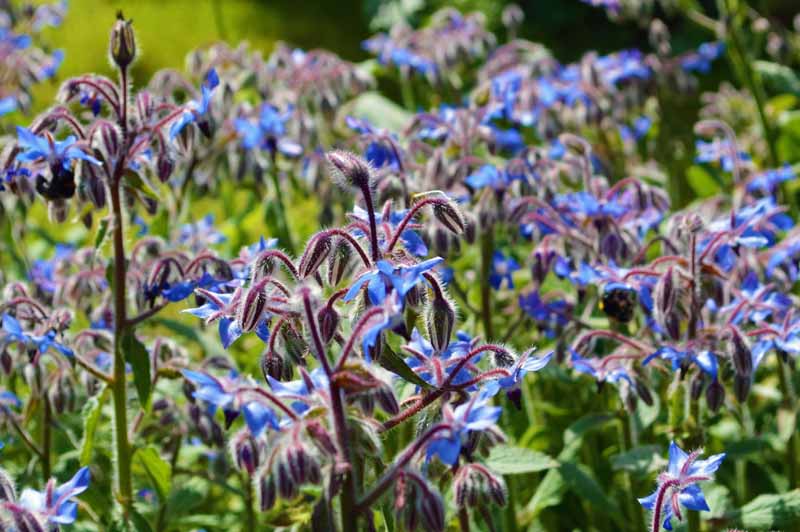
It has lovely soft green foliage, and what's great about this flower is that is self-seeds, so growing it is very low maintenance.
Another great thing about this plant is it is not only pretty, but functional too. The seeds, leaves, and flowers are all edible, and often used in culinary and herbal applications.
Borage seeds are available in a variety of quantities from Eden Brothers.
Read more about adding borage to your garden here.
2. Butterfly Bush
As the name may imply, butterfly bushes are an excellent choice for attracting butterflies (and hummingbirds) to your backyard.
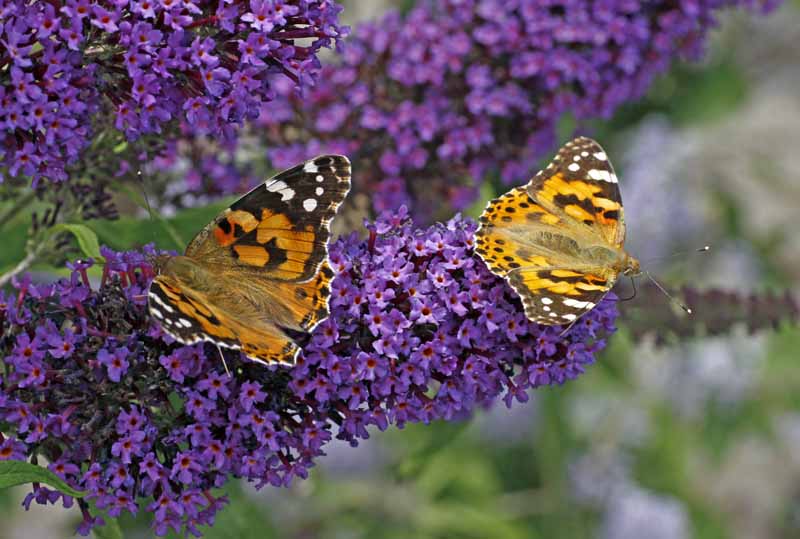
Purple, lavender, pink, or white blooms unleash lovely fragrance in the spring and summer and they can be grown in zones 5-9. And unlike annuals, these are woody shrubs that can last decades with the proper care and occasional pruning.
You'll need lots of room though, as they reach heights of 8-10 feet and grow to about the same size in circumference.
Nature Hills Nursery has a wide selection of colors and cultivars to choose from.
Find tips and tricks for growing butterfly bushes here.
3. Coneflower
Also known as Echinacea, you'll likely see butterflies surrounding this plant's 2-foot-tall flower stalks, enjoying a drink of their sweet nectar.

The blossoms also attract a range of smaller beneficial insects such as bees. Because of their size, these flowers are best positioned in perennial borders adjacent to a vegetable garden.
A variety of coneflower plants are available from Burpee, including a 'Paradiso Mix,' which blooms in a variety of colors.
Read more about growing echinacea here.
4. Cow Parsnip
Thanks to the large size of its compound umbels (a fancy way of describing a certain kind of flower cluster which is characteristic of the parsley family), the cow parsnip is one of the best sources of nectar and pollen for a wide variety of pollinators, especially small bees and wasps.

Also known as Indian celery, Heracleum lanatum is an elegant white-blossomed perennial that's native to North America. It grows easily in a range of habitats, including woodlands, forest clearings, and grasslands.
Seeds are available via Amazon.
5. Dahlia
Ah, delightful dahlias. From deep red to delicate pink, this bushy, herbaceous flower is one of my favorites.
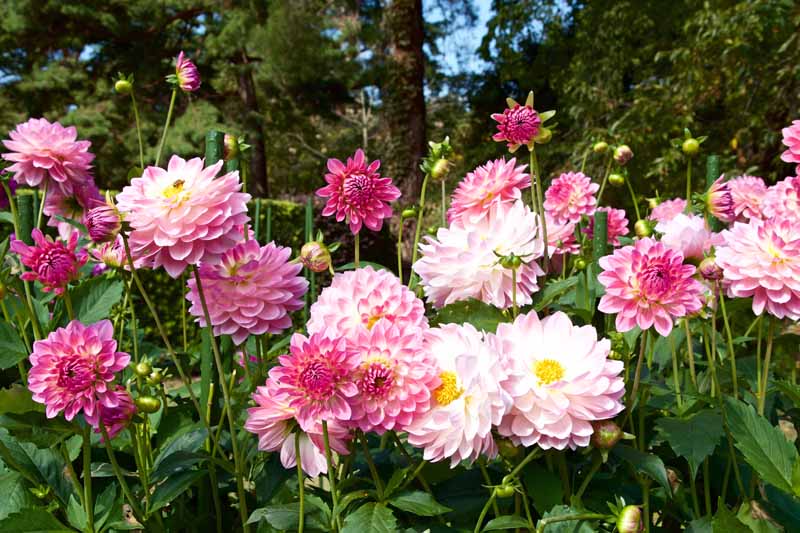
However, it's important to get the right variety of dahlias to help your garden friends. You won't have so much success attracting insects with "pom-pom" or "cactus" varieties, as they have been bred to have petals that are too close together for pollinators to access.
Instead, choose the more open types of dahlias, such as the simple single or semi-double flowered types, which are hardy and low-maintenance plants that pollinators love.
Burpee stocks over 40 varieties so there's a color, shade, and shape that will fit nearly every palette.
Learn how to grow dahlias in your garden here.
6. Daisy
The daisy is very much the flower of my youth, with many hours of my life lost (well-spent, I would argue…) to making daisy chains in the schoolyard. But this humble flower is also a prime bee and butterfly attractor.
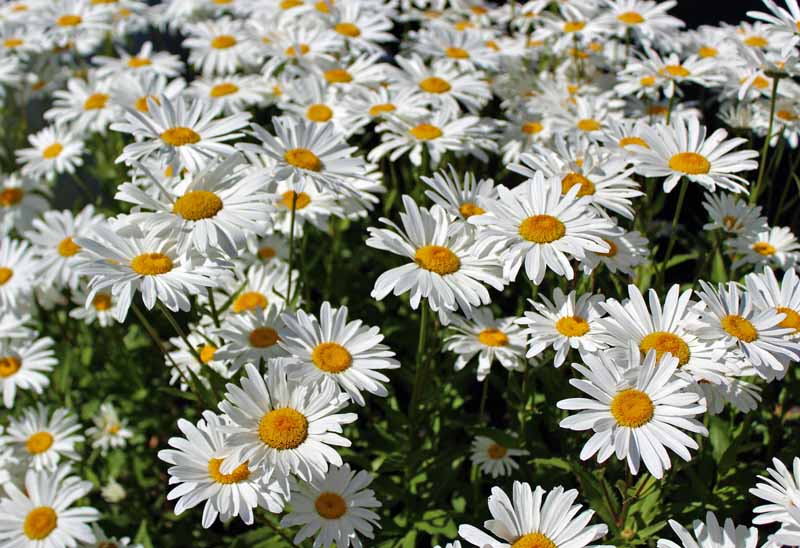
Shasta daisies, with the classic white and yellow appearance usually associated with this flower, are particularly adept at attracting helpful flying friends. But daisies also come in beautiful vibrant shades of yellow, pink, and more.
Long-blooming 'Becky' Shasta daisy plants are available from Nature Hills Nursery.
Learn more about painted, Swan River, African and all other types of daisies.
7. Dandelion
Why do away with your dandelions? Each time I see someone applying pesticides to get rid of this beautiful and ecologically important plant, I inwardly cringe.
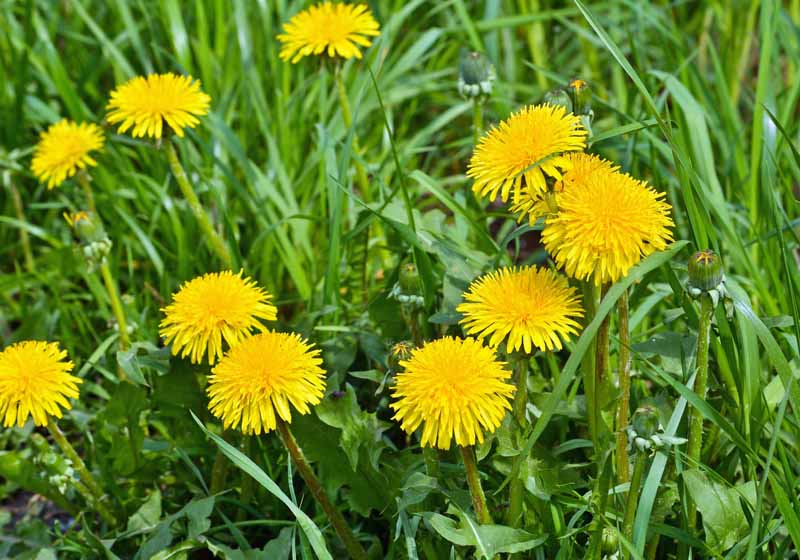
Dandelions are one of the easiest, hardiest plants that offer a surefire way to attract beneficial insects to your garden. Rather than getting rid of these bright yellow delights, we should be doing everything in our power to encourage them to grow!
Dandelions bloom over a long season, starting in early spring and continuing throughout the summer, providing much needed food for pollinators such as bees.
The only problem with these flowers really is that dandelions are much more popular with pollinators than they typically are with gardeners! I'm going to start a dandelion fan club and try to get some more support for this wonderful plant.
Read more about growing dandelions here.
8. Goldenrod
This flower is wonderful for keeping your creepy crawly friends happy past summer and into the fall. Whilst most flowers bloom in the summertime, this one starts blooming in late summer and continues well into autumn.

Planting late-season blooms like Solidago is key to keeping your new friends around, encouraging them to stay rather than moving on to greener pastures. Plus, goldenrod is perfect for bringing some color into your garden in the fall.
'Fireworks' goldenrod plants with vibrant yellow cascading flowers are available from Burpee.
9. Lavender
Not quite a flower, not quite an herb, this perennial plant is nevertheless a must-have for attracting pollinating insects.
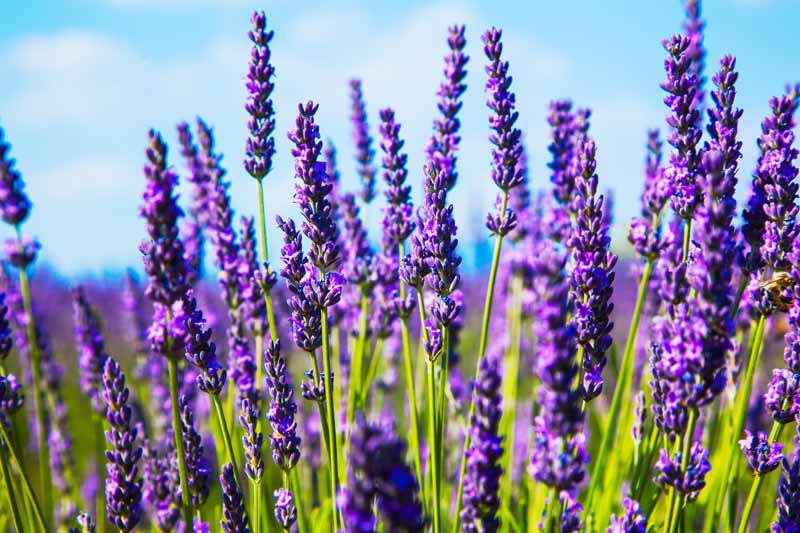
Bees go absolutely crazy for lavender, which also has other interesting properties that help with warding off unwanted insects, such as fleas, flies, and mosquitoes.
Lavender is also obviously a very pleasant smelling plant that can be dried and used to fragrance the home.
Seeds are available from Eden Brothers.
Learn how to grow lavender in your hardiness zone here.
10. Marigold
There is some controversy about this edible, annual, brightly colored flower. Some people claim that it actually repels bees. But in my experience, I've found the opposite to be true, with bees merrily visiting the marigolds along with a whole host of other friendly critters such as flies, moths, and butterflies.
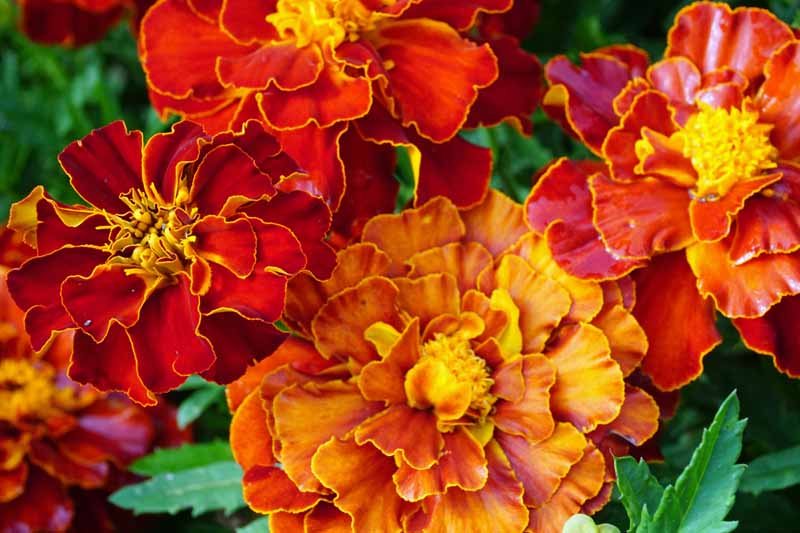
Marigold also comes with the added bonus of being excellent for improving soil health, and its roots are supposed to ward off disease-causing soil nematodes that often afflict tomatoes and other vegetables. Aim to buy varieties with open centers so insects can easily reach the pollen.
For a combination of yellow, gold, orange, and red blooms, try the 'Chameleon' variety. Seeds are available from Burpee.
Read all about growing marigolds here.
11. Milkweed
Also known as butterfly weed, Asclepias are herbaceous perennial plants that are a magnet for butterflies including monarchs, who love to sip on their sweet nectar. And they're not the only ones – wild and domestic bees, hummingbirds, and other pollinators also enjoy visiting this flower.
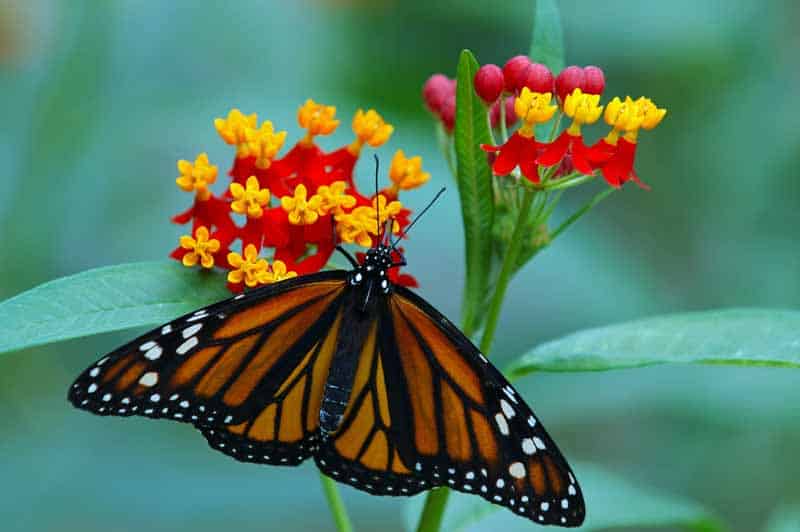
It is slightly challenging to grow from seed, requiring an early start indoors, although tubers are also available and a little easier to plant in spring.
Looking for a variety that thrives in hot weather? Orange and scarlet 'Red Butterfly' Asclepias is a beautiful option. Seeds are available from Burpee.
Learn more about why you should add milkweed to your garden here.
12. Snapdragon
The snapdragon is the ultimate bumblebee attractor. It has evolved unique ways to attract these pollinators, adapting its scent, color, and physical form to perfectly suit all of the bumblebee's needs.
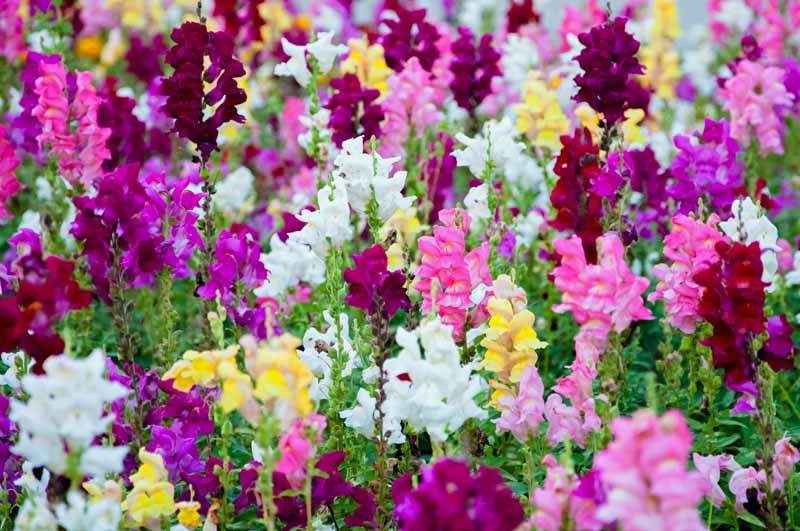
For instance, the snapdragon deliberately releases scent during the bumblebee's most active hours during the day, which proves irresistible for the bee.
The colors of the snapdragon are also far from a random choice. Bees cannot see red, but can see yellow, blue, and ultraviolet. The way the patterns are arranged on each flower also act as a huge billboard screaming, "All you can eat, this way!".
Also, the unique bell shape of the petals is adapted perfectly for the little bees to buzz in and out of.
In short, if you would like to bring more bumblebees into your garden (and who wouldn't?), snapdragons are the way to go.
Various single color cultivars and combinations are available from Burpee.
Read our guide to growing snapdragon now.
13. Sunflower
The beautiful sunflower is perfect for attracting insects as well as birds, who adore their seeds. This is ideal because it's important to attract all kinds of helpful critters to the garden, and birds also play a key role in pollination.

Another magnet for bees, these cheery flowers are sure to be a hit with many forms of wildlife in your garden.
Many different types of sunflower seeds are available from Eden Brothers, including the dwarf 'Twilight Zone' variety.
You can find our guide to growing sunflowers here.
Flower Power
Here's to flower power! Garden blooms might look delicate and pretty, but they also play a vital role in the functioning of our ecosystems.
Have you had a go at planting any of these flowers in your garden? Let me know how you got on in the comments section below.

About Natasha Foote
With a passion for soil health and growing trees, Natasha Foote is a biologist who was hit with a serious case of green fingers, and decided to swap sterile laboratories for getting her hands dirty in the soil. Formerly a farmer and researcher working with the agroforestry project Mazi Farm in Greece, when she wasn't working on the farm, she was busy studying soil biology under the microscope. Now, you can find her in the south of France where, in between enjoying all the fresh peaches, plums, apricots, and cherries that the area has to offer, she's working on various agricultural projects whilst writing about all things green.
Does A Vegetable Garden Attract Mice
Source: https://gardenerspath.com/plants/flowers/best-flowers-for-pollinators/
Posted by: warnerhipt1970.blogspot.com

0 Response to "Does A Vegetable Garden Attract Mice"
Post a Comment